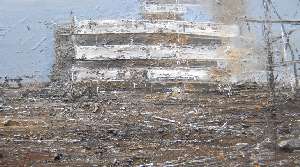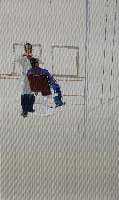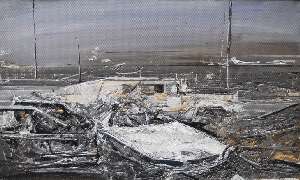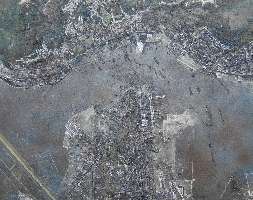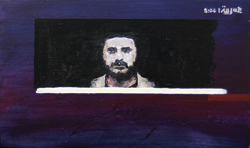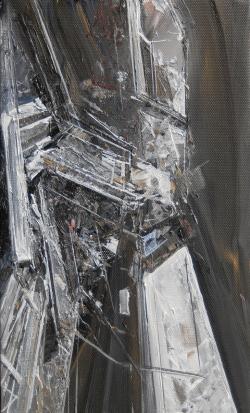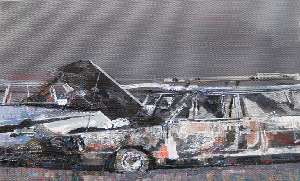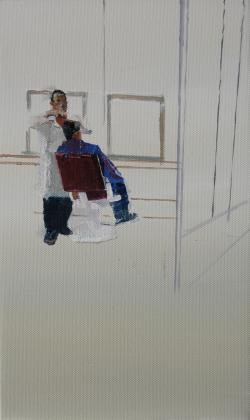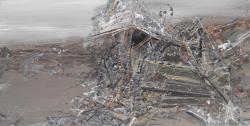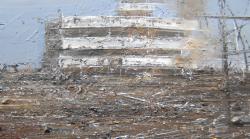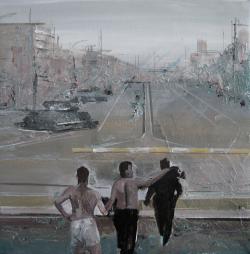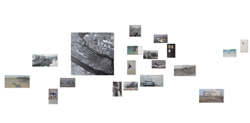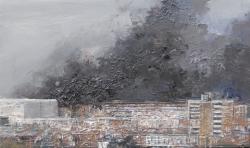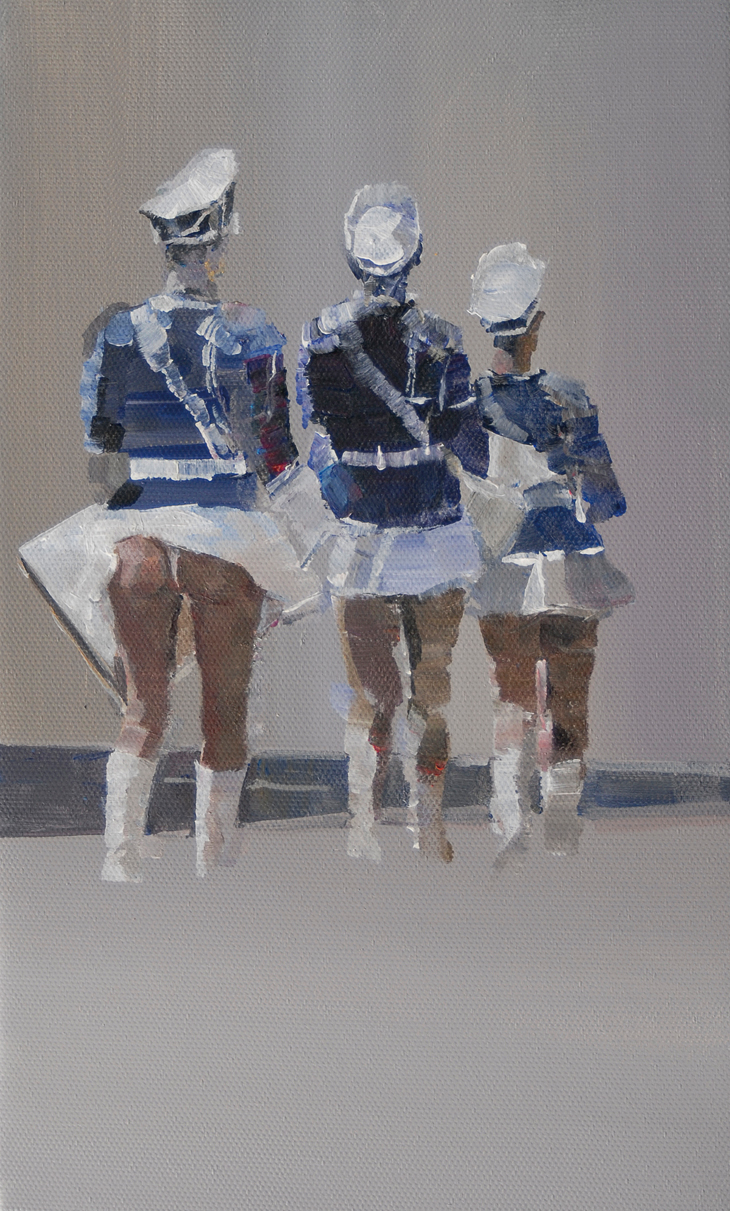
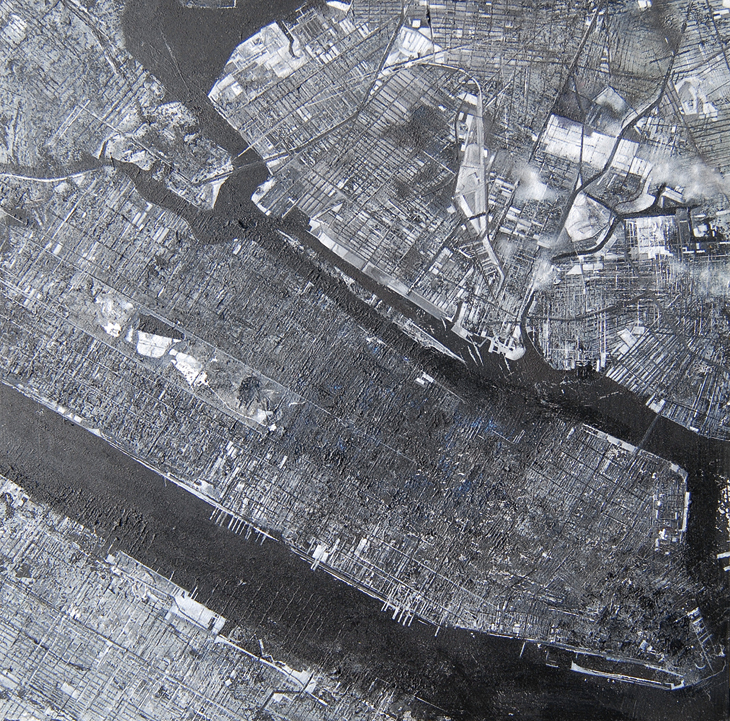
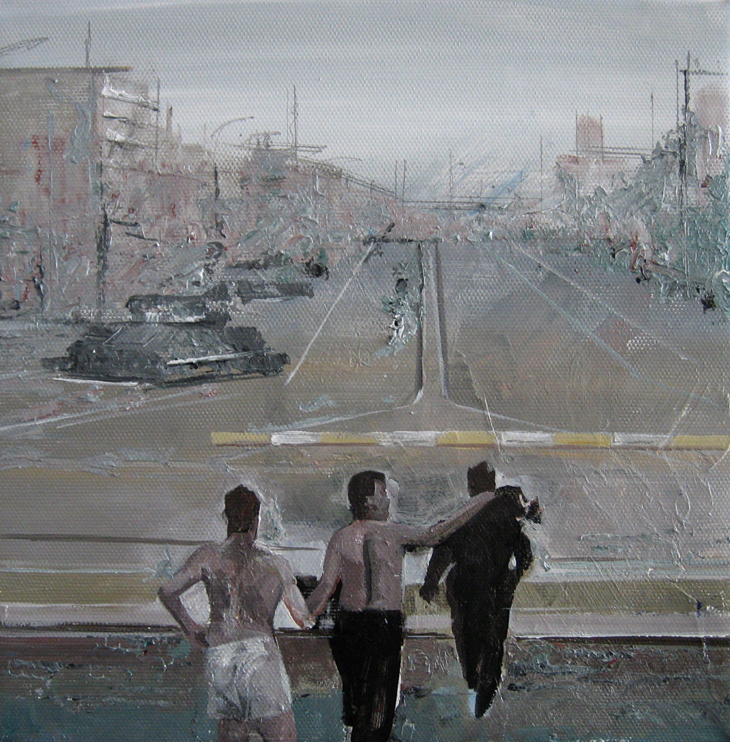

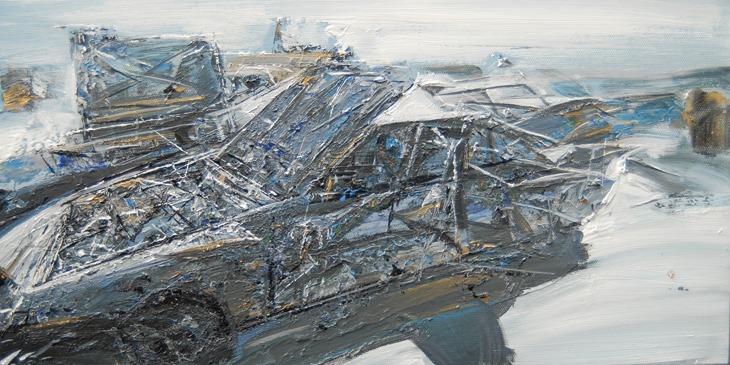
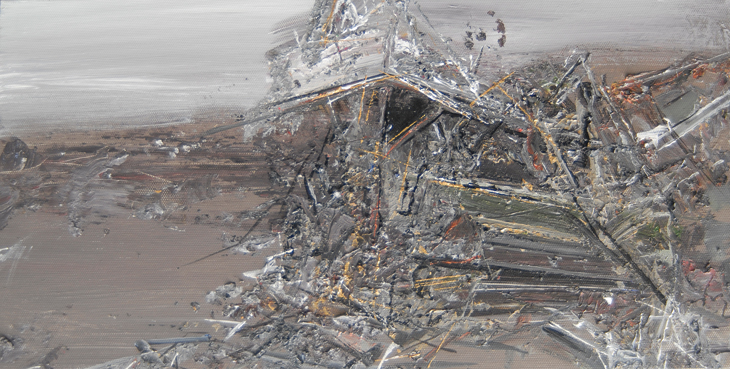
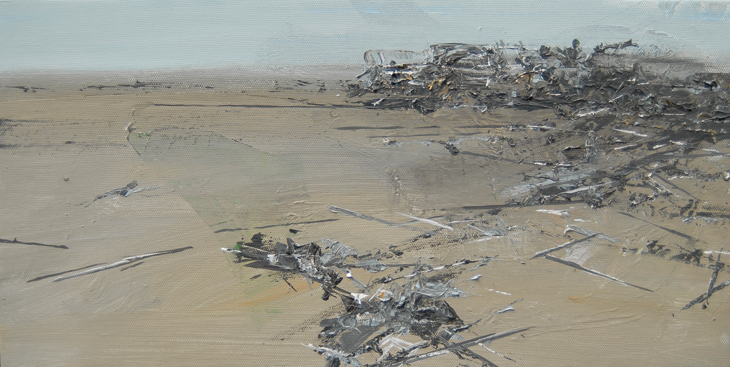

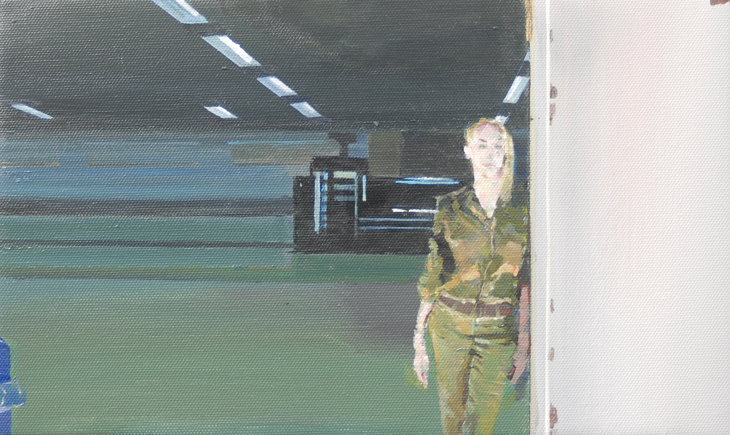
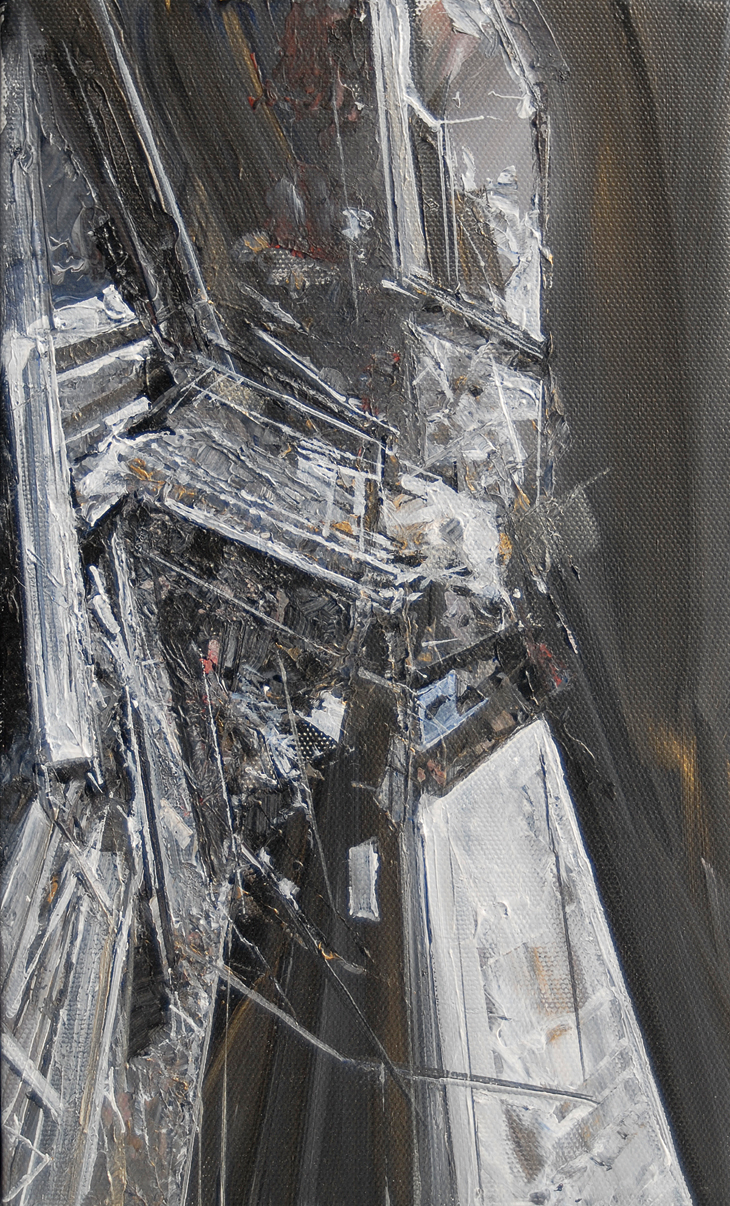


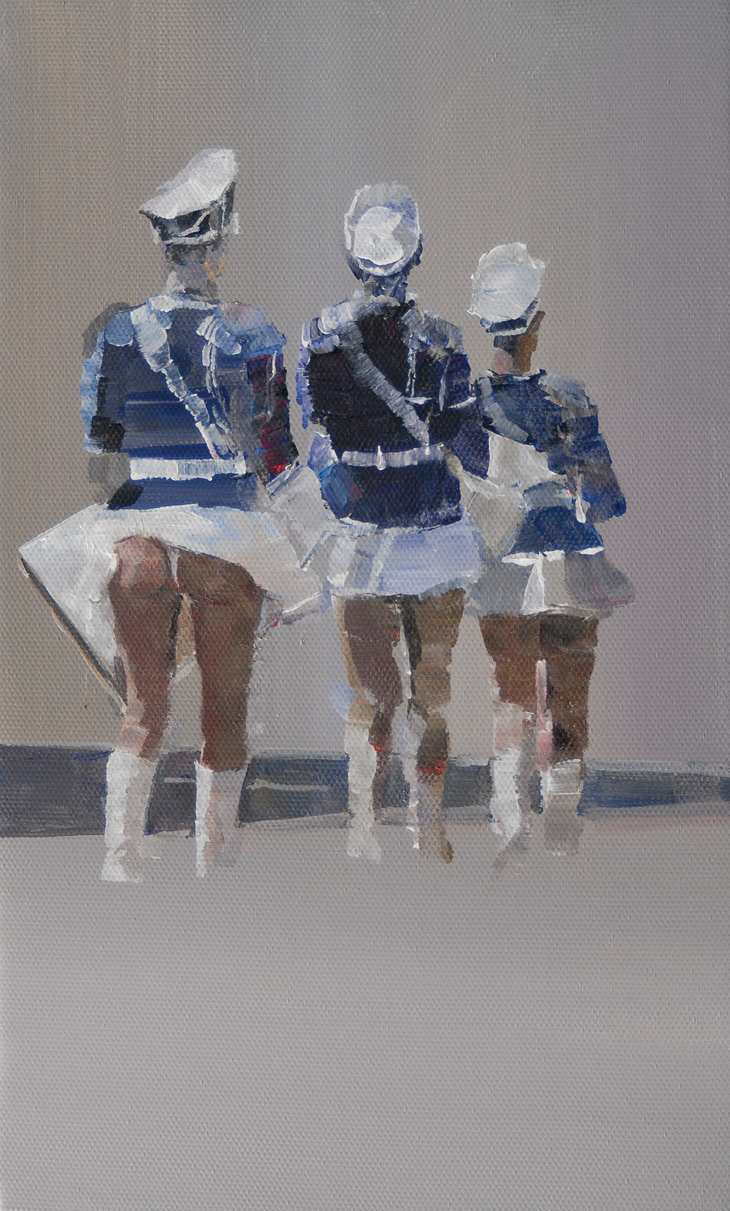
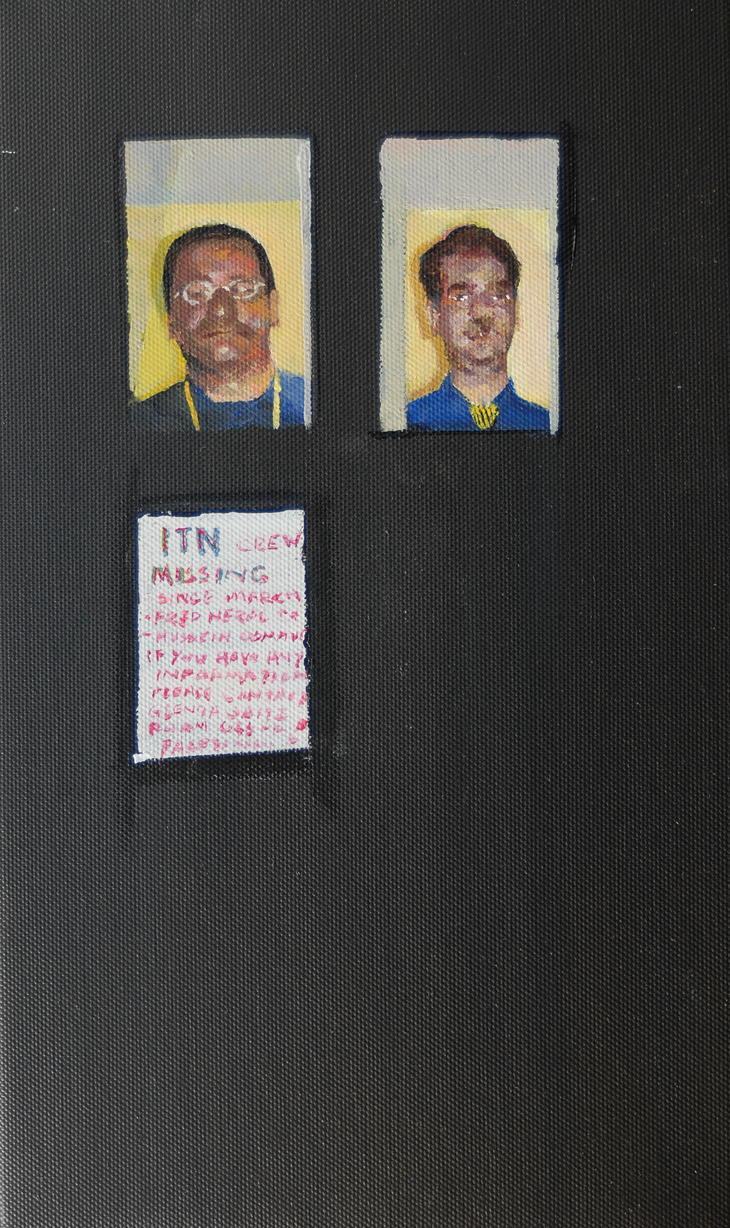
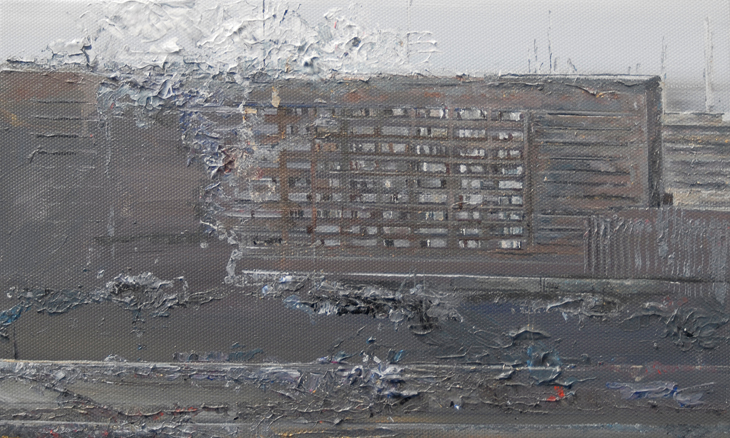
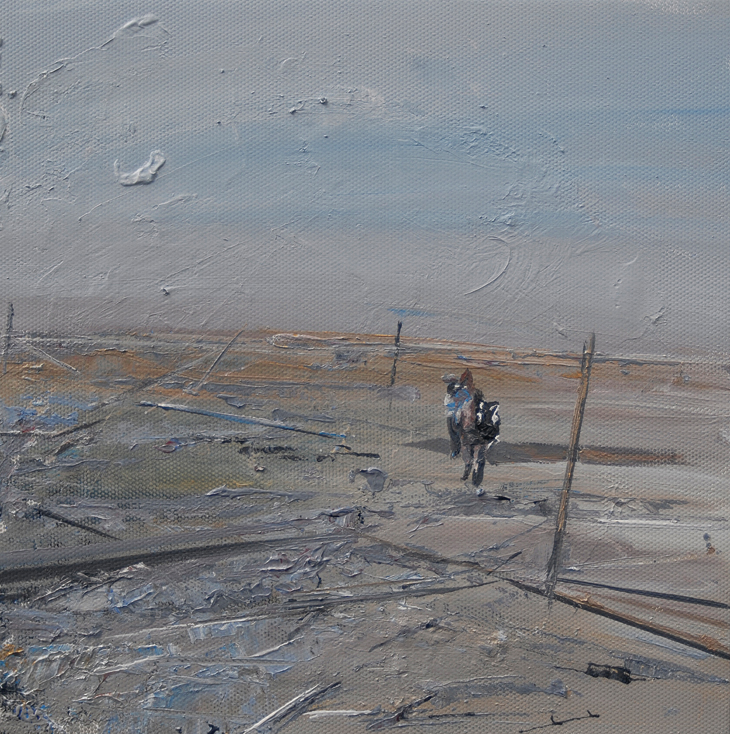

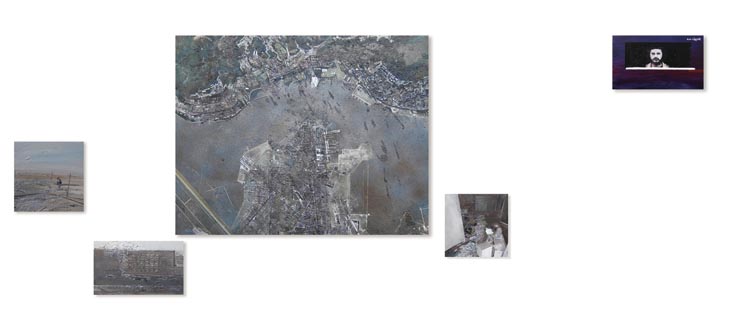

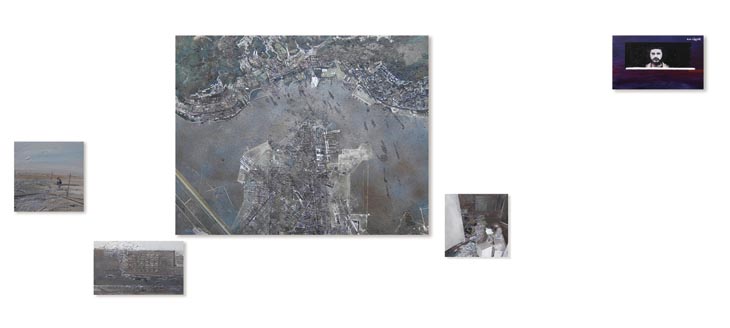

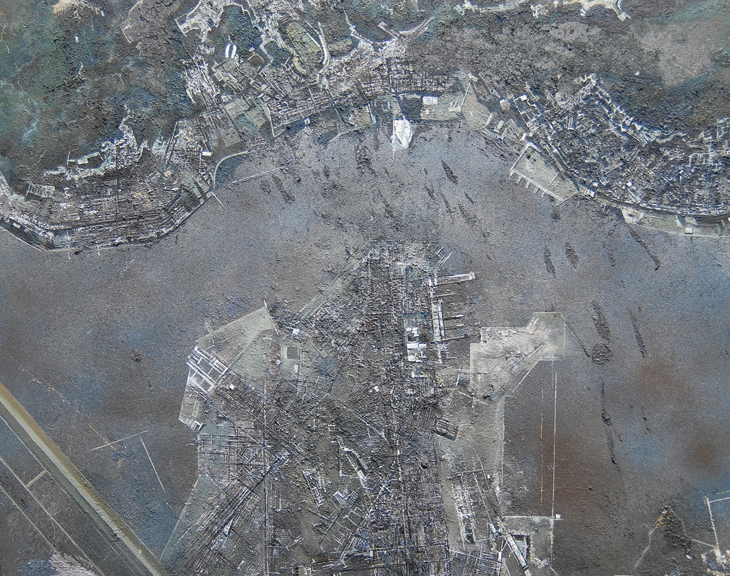
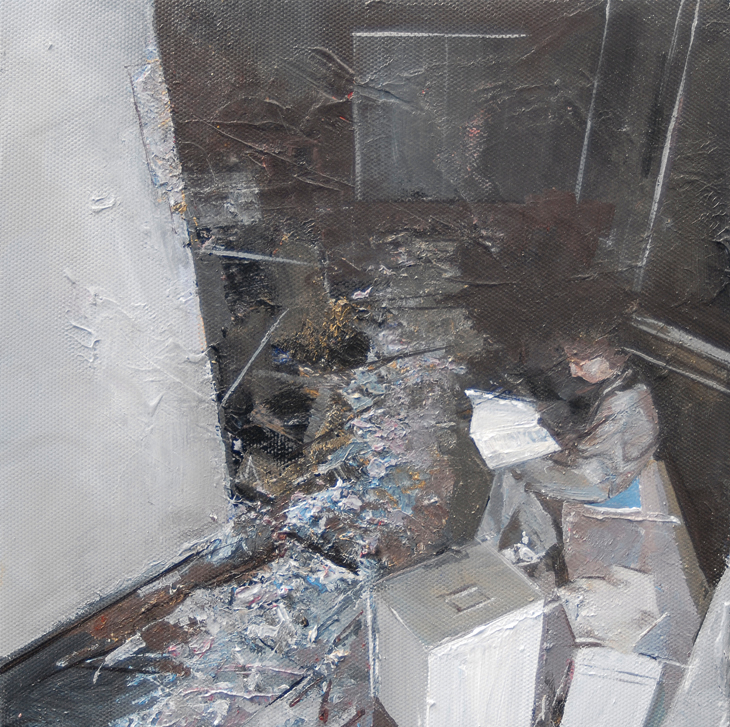

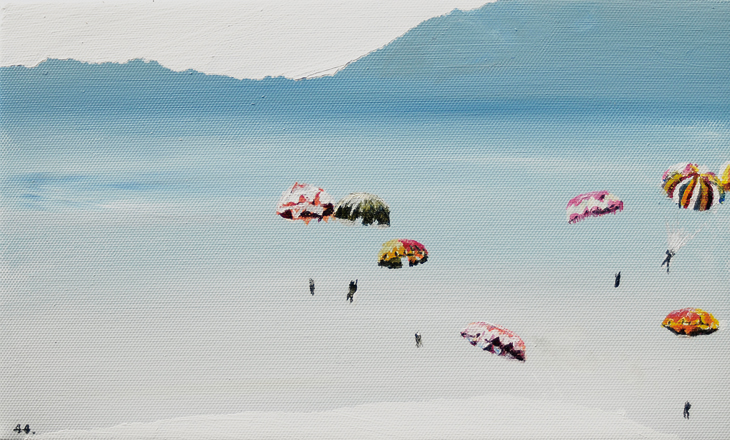

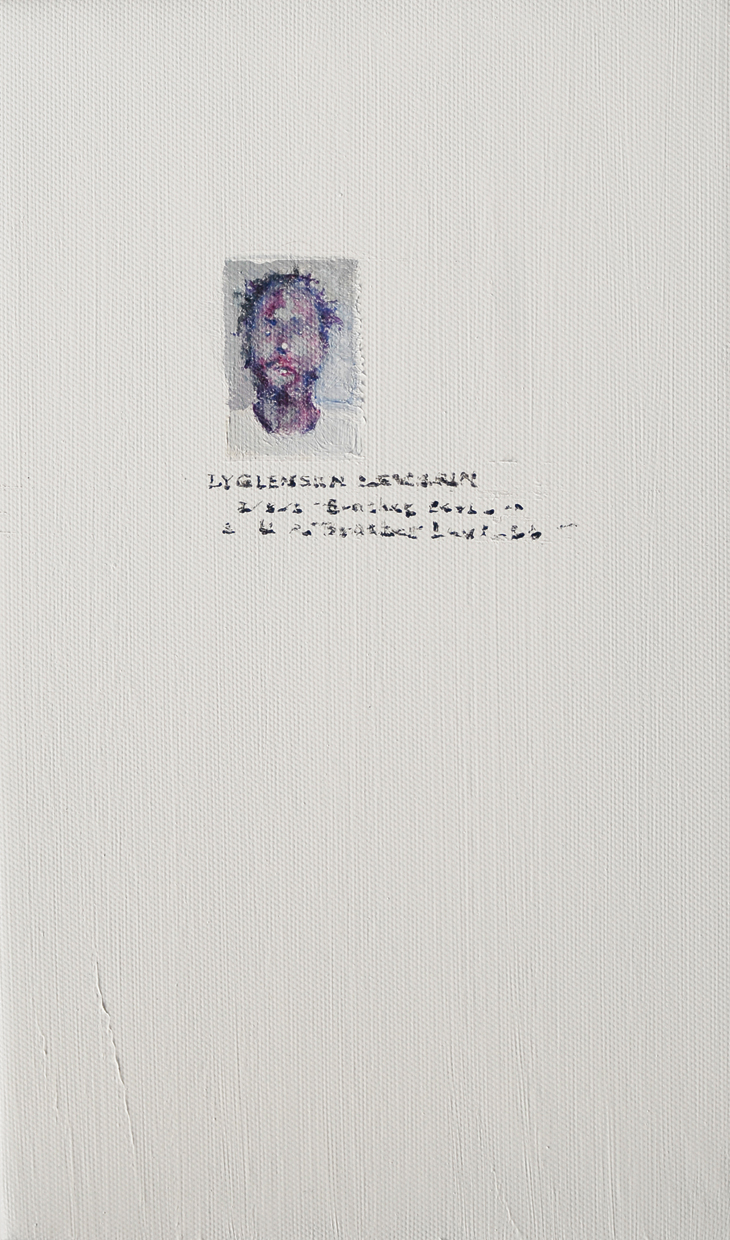
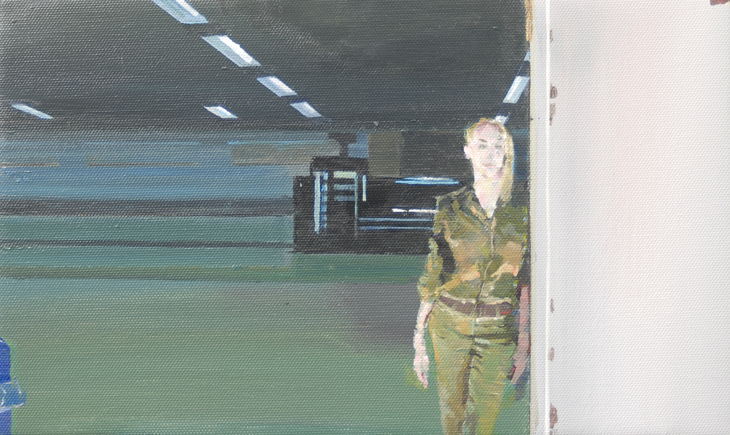


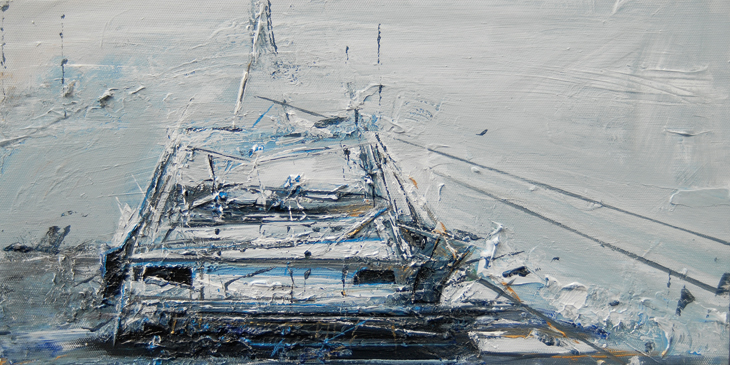
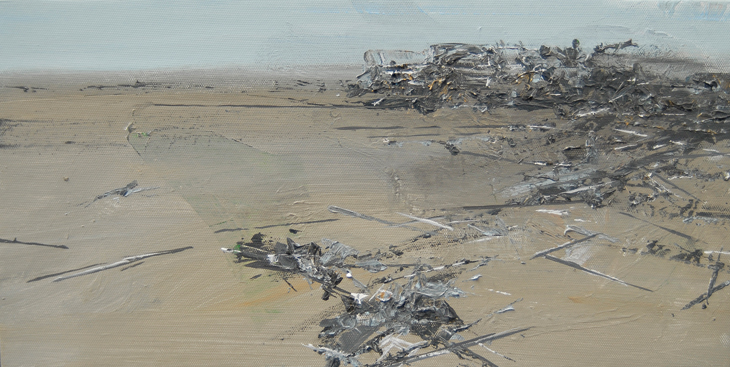



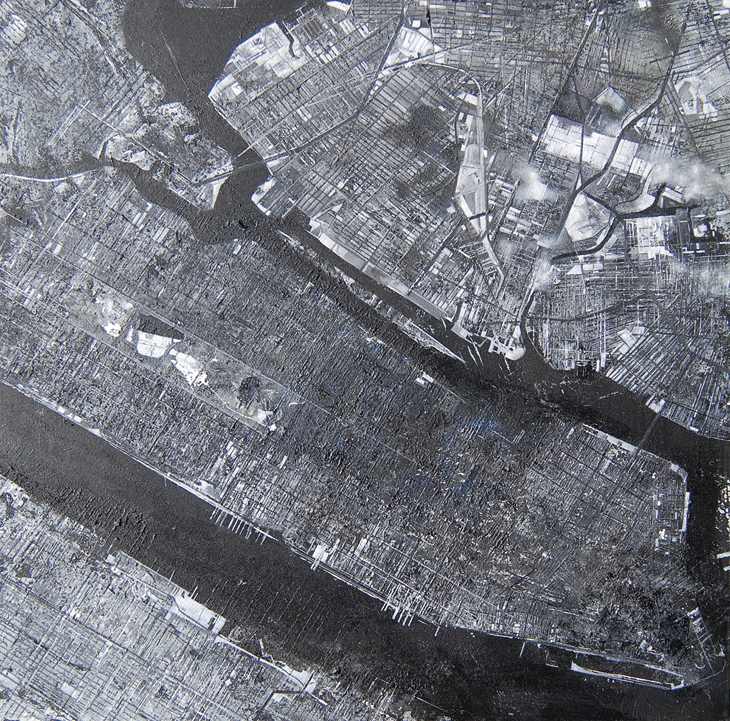
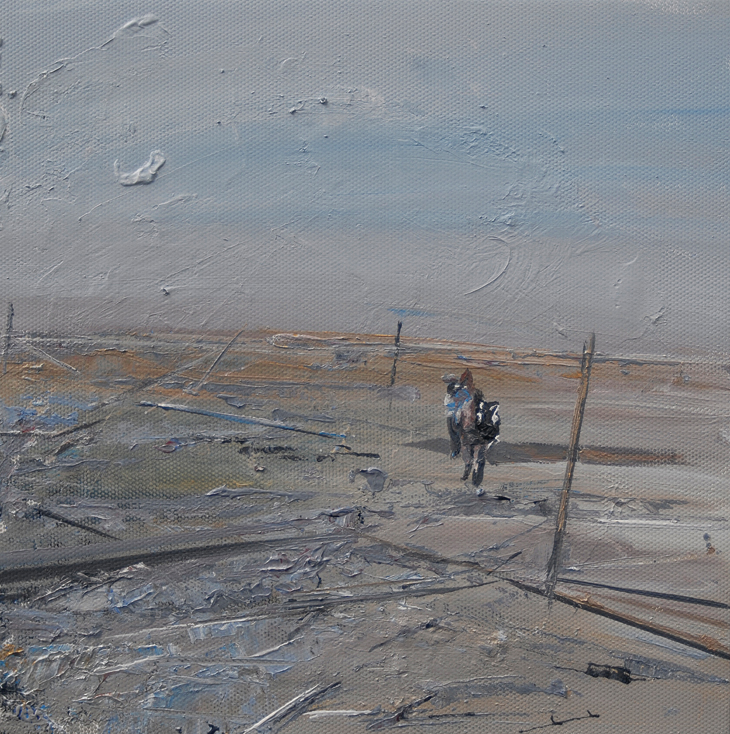
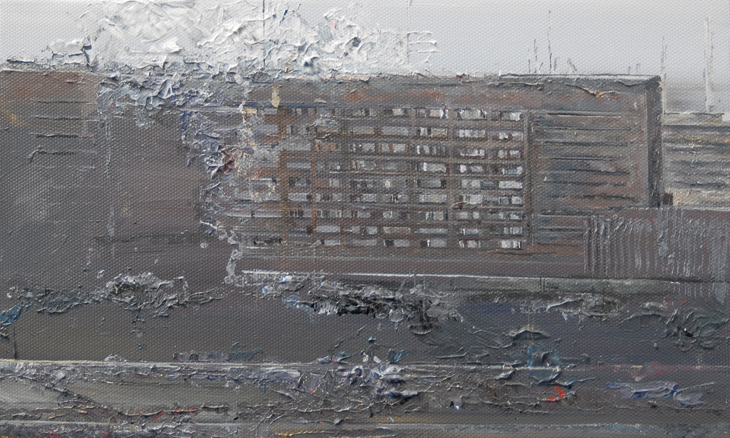
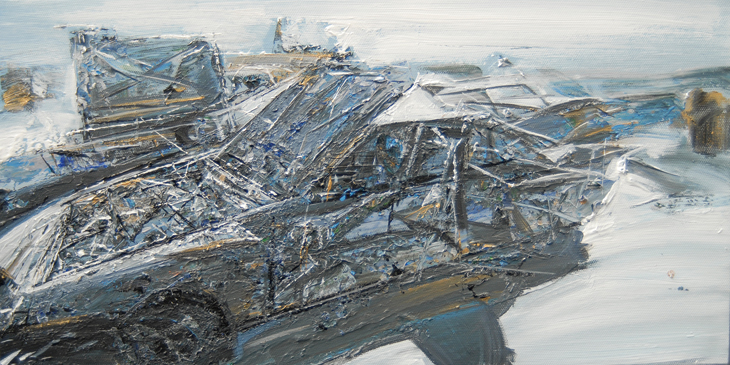

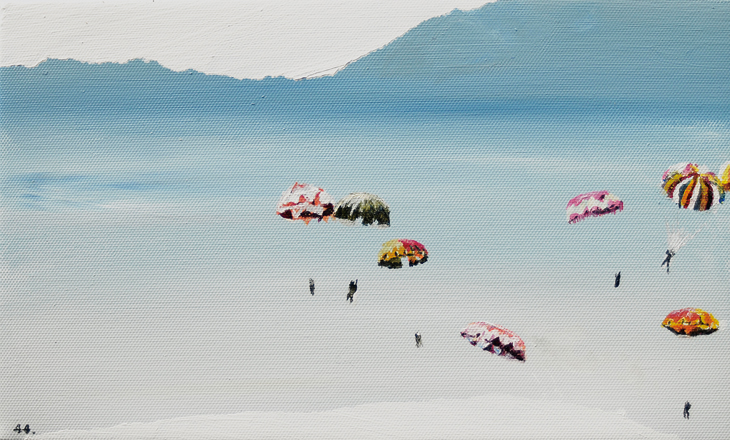
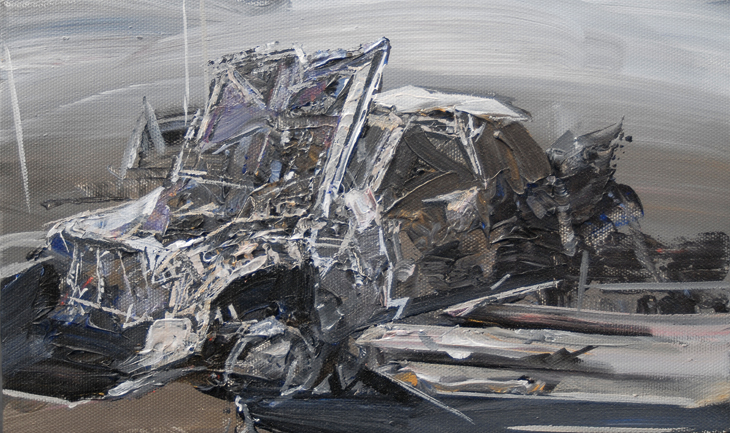
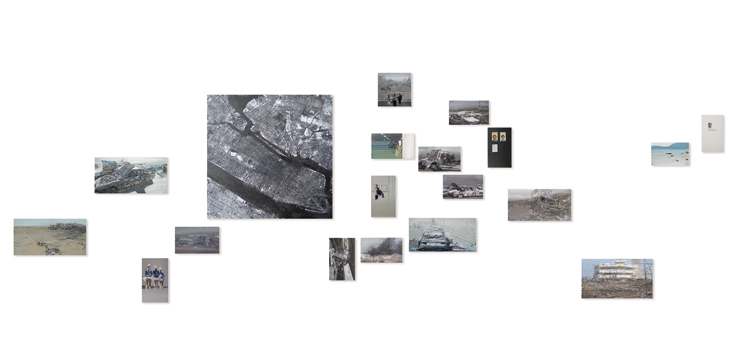
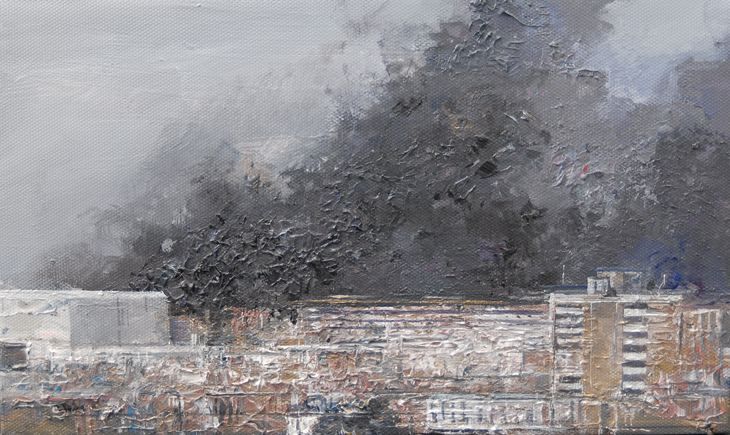
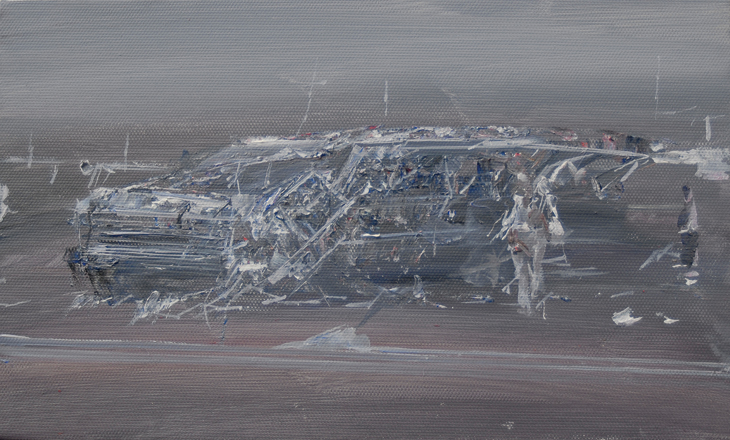
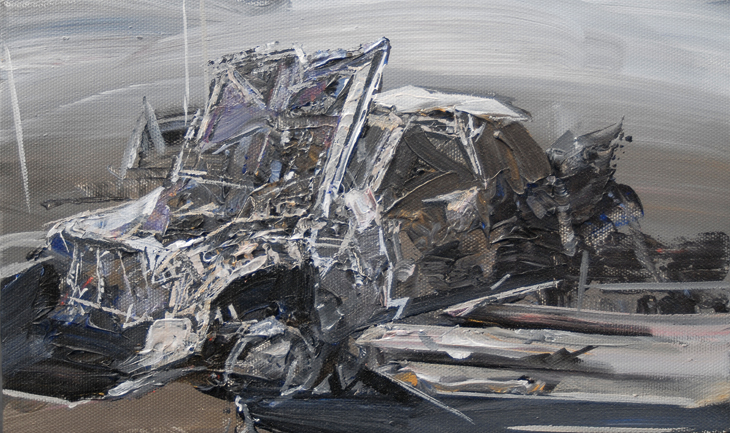
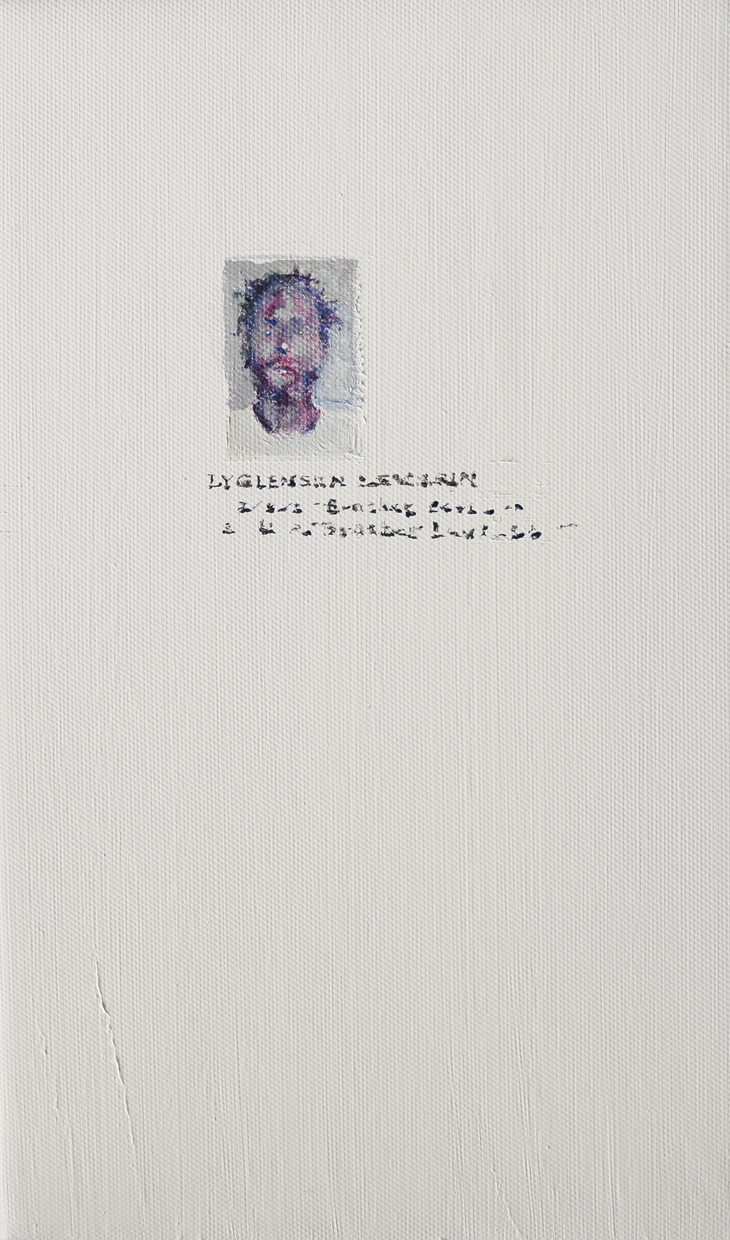



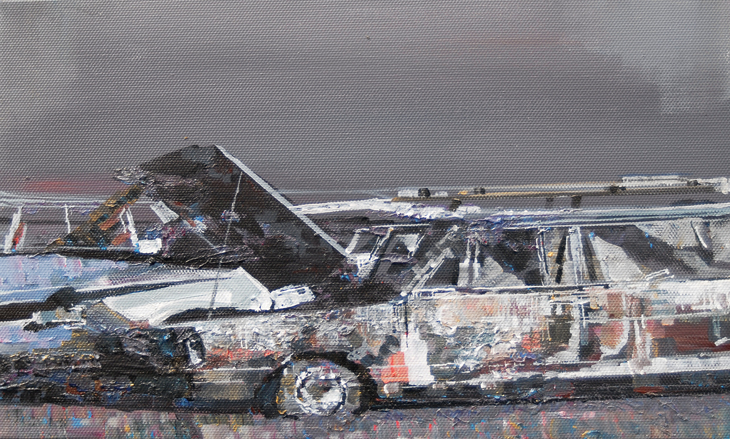
Li Yan
Li Yan’s Accident series Nos. 5 & 6 deal with the phenomenon of horror. Approaching painting as a forensic activity, Li’s works are comprised of groups of small canvases to reconstruct disaster scenes as elaborate narratives. Following the format of media reportage, each painting contributes a different perspective to the drama, presenting ’evidence’ as fragmented info bytes for viewer scrutiny and re-assemblage.
Hung in asymmetrical configurations, Li’s canvases invite open interpretation, with each panel operating both independent of and interconnected to the whole, construing event as non-linear and subjective. Maps, car wrecks, bombed out buildings, and mug shots take equal importance to more benign scenes of barbershops, saucy marching bands, and holiday parasailers; like all good crime stories terror is enhanced by its everyday banality, and the devil is in the details.
Executed on intimately small scale, Li’s paintings compound violence to microcosmic triviality, compacting the scope of real devastation into neutralised frames. Citing the impossibility for media to convey actual experience, Li’s works seek to recode this information by focussing on the processes of aesthetic construction. Working in a reduced, earthy palette, Li simultaneously references photography and ruin; the surfaces visually replicate the sensation of brutality with paint frantically applied, scraped down to bare canvas, knifed on as impasto rubble, scabbed over, and obliterated by intense dirty splotches. Within each tiny canvas is an anomalous sense of space, conveying the sublime as ultimate beauty and horror, both diminutive and infinite.
Li Yan’s Accident series No. 6 deal with the phenomenon of horror. Approaching painting as a forensic activity, Li’s works are comprised of groups of small canvases to reconstruct disaster scenes as elaborate narratives. Following the format of media reportage, each painting contributes a different perspective to the drama, presenting ’evidence’ as fragmented info bytes for viewer scrutiny and re-assemblage.
Hung in asymmetrical configurations, Li’s canvases invite open interpretation, with each panel operating both independent of and interconnected to the whole, construing event as non-linear and subjective. Maps, car wrecks, bombed out buildings, and mug shots take equal importance to more benign scenes of barbershops, saucy marching bands, and holiday parasailers; like all good crime stories terror is enhanced by its everyday banality, and the devil is in the details.
Executed on intimately small scale, Li’s paintings compound violence to microcosmic triviality, compacting the scope of real devastation into neutralised frames. Citing the impossibility for media to convey actual experience, Li’s works seek to recode this information by focussing on the processes of aesthetic construction. Working in a reduced, earthy palette, Li simultaneously references photography and ruin; the surfaces visually replicate the sensation of brutality with paint frantically applied, scraped down to bare canvas, knifed on as impasto rubble, scabbed over, and obliterated by intense dirty splotches. Within each tiny canvas is an anomalous sense of space, conveying the sublime as ultimate beauty and horror, both diminutive and infinite.



